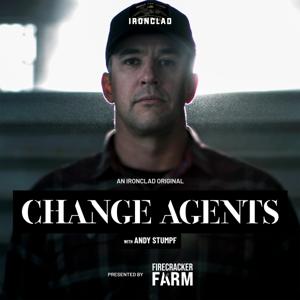Mark sits with Bill McConnell to discuss, well, everything, starting with a quick exchange about the benefits of voluntary discomfort, moving into pre-Clovis arrowheads and onto evolving out of a wrestling mentality with regards to fitness into an appreciation of training for specific goals. In this case, for Bill, fitness supports his journey as a primitive survivalist, a condition that cannot be accurately pursued in a Globo-Gym. And that's the last time we talk about fitness because Bill's knowledge, experience and skills in the context of primitive survival trump just about any other topic we might discuss.
By way of an introduction Bill humorously describes his drive to be "more than an Amway salesman for the bow drill." He talks about harvesting a bear with a stone point arrow and a "stick from the woods", homemade bow, homemade shaft, flint-napped arrowhead, and also about blowing 15-20 stalks in order to get close enough—15 yards—to an extremely sensitive antelope to shoot it with a primitive bow. Bill describes his path of experimental archeology (replicating old tools and using them in the real world) where he is in the real world, seeing artifacts and organic material, and being familiar enough with ancient cultures to imagine how the discovered and recovered artifact might have been used as a tool thousands of years ago. This is very different from scientific conclusions reached by researchers who have never been anything other than in 68 degrees and well-fed ...
His explanation of building, customizing and using the AtlAtl is remarkable. The difference between foreshaft and main shaft is clear to me as it never was before, and how a hunter can weaponize the tool—the foreshaft—according to the game being hunted, from fish to antelope to elk and larger game, made me understand why humans are still here and many species that primitive humans hunted are not.
"This is functioning art, the synthesis of art and science."
At 1hr 26min they talked about the VO2 Max of various animals and the primacy of the antelope so after the conversation Mark dug up his old chart:
Reinhold Messner (arguably the best high altitude climber ever) 48.8
Mark Twight 56.6
Alex Lowe (much better, faster, stronger climber than Twight) 69
Miguel Indurain (five-time TDF winner) 71
Jim Ryun (1 miler world record in 1967) 81
Steve Prefontaine (1 mile in 3:54) 84.4
Bjorn Dahle (Olympic Gold Medals in several XC Ski distances) 93
Certain Dogs have VO2 Max of 90-100
FunnyCide and other thoroughbreds are somewhere between 150-200
Pronghorn Antelope (the highest ever recorded) 300
We eventually land on the discussion of nutritional density and why people eating processed foods to fullness find themselves hungry a couple of hours later as the body inventories its intake and learns that the large meal lacked certain necessary nutrients. It's very different "when I harvest my own meat ... I don't have to eat as much of it because there is more nutrition within that food ..."
Finally, it is very important to think about environment and how our presence affects it, "When we leave things for the next generation so that they find it as you did they at least have the ability to make new mistakes or try new things out ... we haven't diminished the resources ... but that's not how we have move through our environment, we have altered it, exploited it, removed some potential for understanding and growth ... and that needs to change."




































